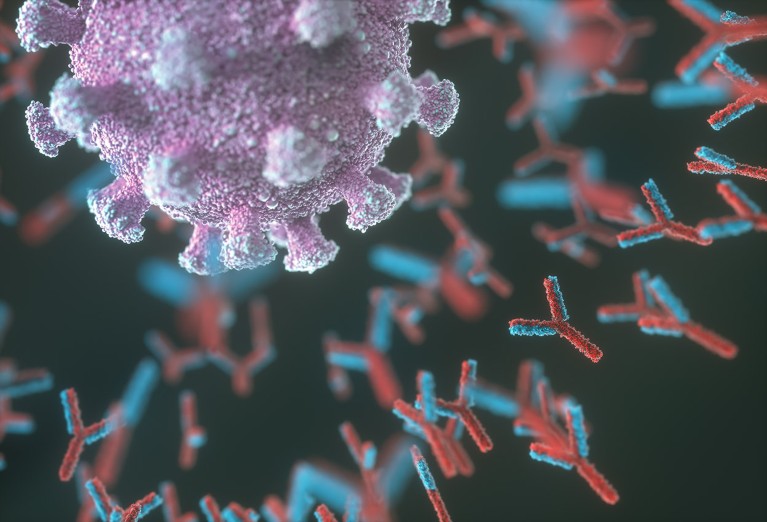
The virtual lab used multiple LLMs to design antibody fragments that could bind to SARS-CoV-2.Credit: KTSDESIGN/Scientific Photo Library via Getty
In an effort to automate scientific discovery Using artificial intelligence (AI), researchers created a virtual laboratory that combines multiple “AI scientists” – large language models with defined scientific roles – that can collaborate to achieve the goals set by researchers humans.
The system, described in a preprint published on bioRxiv last month1was able to design antibody fragments called nanobodies that can bind to the virus that causes COVID-19, coming up with nearly 100 of these structures in a fraction of the time it would take a fully human research group.
Researchers have built an “AI scientist”: what can it do?
“These virtual lab AI agents have proven to be quite capable of performing many tasks,” says study co-author James Zou, a computational biologist at Stanford University in California. “We are very excited to explore the potential of the virtual laboratory in different scientific fields.”
The experiment “represents a new paradigm of viewing AI as a collaborator and not just a tool,” says Yanjun Gao, who studies AI applications in healthcare at the University’s Anschutz Medical Campus. from Colorado to Aurora. But she adds that human input and oversight remain crucial. “I don’t think at this point we can fully trust AI to make decisions.”
Interdisciplinary AI
Scientists around the world have explored the potential of large language models (LLMs) to accelerate research. including the creation of an “AI scientist” who can carry out parts of the scientific process, from generating hypotheses and designing experiments to writing papers. But Zou says most studies have focused on applying LLMs to narrow-scope experiments, rather than exploring their potential in interdisciplinary research. He and his colleagues set up the virtual laboratory to combine expertise from different fields.
They started by forming two LLMs for their virtual team: the principal investigator (PI) team leader, who has expertise in AI for research, and a “scientific critic” to detect errors and oversights of other LLMs while throughout the process. The authors gave these LLMs a goal – to design new nanobodies to target the SARS-CoV-2 virus – and asked them to develop other LLMs that could achieve this.
“A historic moment”: Scientists use AI to design antibodies from scratch
The principal investigator then created and trained three additional AI science agents to support the research efforts. Each of these “scientists” was trained in a particular discipline: immunology, computational biology or machine learning. “These different agents would have different expertise and work together to solve different types of scientific problems,” says Zou.
The AI agents worked independently on tasks assigned by the virtual PI, such as calculating parameters or writing code for a new machine learning model. They could also use other AI research tools, such as protein design tools AlphaFold and Rosetta. A human researcher guided the LLMs through regular “team meetings” to evaluate their progress.

